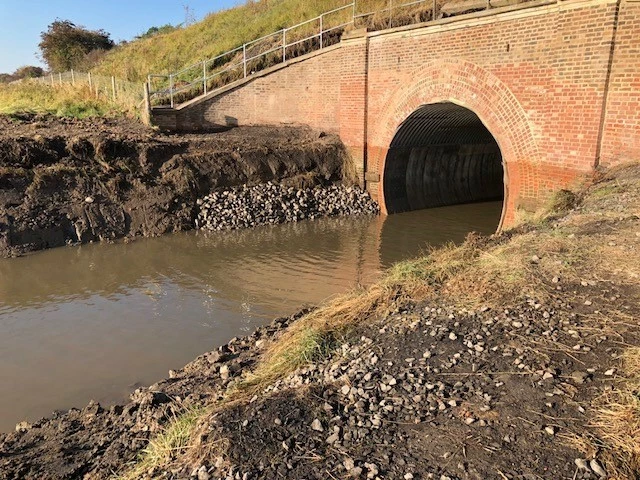
Partner Article
Bridge over troubled waters
A crumbling rail bridge located in a town’s ‘best kept secret’ area can now continue to safely carry passengers to their destination.
It’s an area renowned for its natural beauty – but for the very same reason expert engineers worked in challenging conditions to support the failing Victorian rail underbridge over Greatham Beck, on the outskirts of Hartlepool in the Tees Valley.
A range of specialist organisations – including Seymour Civil Engineering and AmcoGiffen – came together to complete the project despite being its difficult tidal location and abundant wildlife including kingfisher, woodpeckers and owls.
Chris Byrne, Contracts Manager for Seymour Civil Engineering, said: “The project has run for 12 weeks and was taken on in collaboration with our sister company AmcoGiffen, which had been contracted by its client Network Rail, to strengthen the Greatham Beck rail bridge.
“The whole area is teeming with wildlife so we also worked with the Environment Agency to ensure its protection.
“But despite dealing with the very intricate challenges we faced with tides and wildlife, we finished the project on time and to budget.”
The underbridge is located between Billingham railway station and Seaton Carew railway station, but no travel was affected during the work, which included installing a steel ‘liner’ under the bridge, masonry repairs and repairing fractures.
Nick Hill, Senior Project Manager at AmcoGiffen, explained more about the work required to support the structure.
He said: “The arch structure had deteriorated to such an extent that it was necessary to carry out major works.
“For this kind of structure it’s normal to line the arch with corrugated steel structure to effectively make the brick arch redundant. As the brick arch deteriorates over the years the steel liner will take more and more of the load.
“The main challenge was working in an environmentally sensitive area requiring various consents, tidal fluctuations and water management.
“The tidal conditions were challenging due to the large differences in level from low to high tide. At times of very high tide the water was able to flow over our dam, but the water drained back out when the tide receded allowing us to continue working.”
An engineering team of around 20 worked on the project which took 12 weeks to complete, starting in mid July and completing at the end of October.
Nick added: “The project was a very successful example of how teams wanting to work together and communicate well can deliver a high-quality project to budget and programme.”
This was posted in Bdaily's Members' News section by Publicity Seekers .
Enjoy the read? Get Bdaily delivered.
Sign up to receive our daily bulletin, sent to your inbox, for free.








 A year of resilience, growth and collaboration
A year of resilience, growth and collaboration
 Apprenticeships: Lower standards risk safety
Apprenticeships: Lower standards risk safety
 Keeping it reel: Creating video in an authenticity era
Keeping it reel: Creating video in an authenticity era
 Budget: Creating a more vibrant market economy
Budget: Creating a more vibrant market economy
 Celebrating excellence and community support
Celebrating excellence and community support
 The value of nurturing homegrown innovation
The value of nurturing homegrown innovation
 A dynamic, fair and innovative economy
A dynamic, fair and innovative economy
 Navigating the property investment market
Navigating the property investment market
 Have stock markets peaked? Tune out the noise
Have stock markets peaked? Tune out the noise
 Will the Employment Rights Bill cost too much?
Will the Employment Rights Bill cost too much?
 A game-changing move for digital-first innovators
A game-changing move for digital-first innovators
 Confidence the missing ingredient for growth
Confidence the missing ingredient for growth